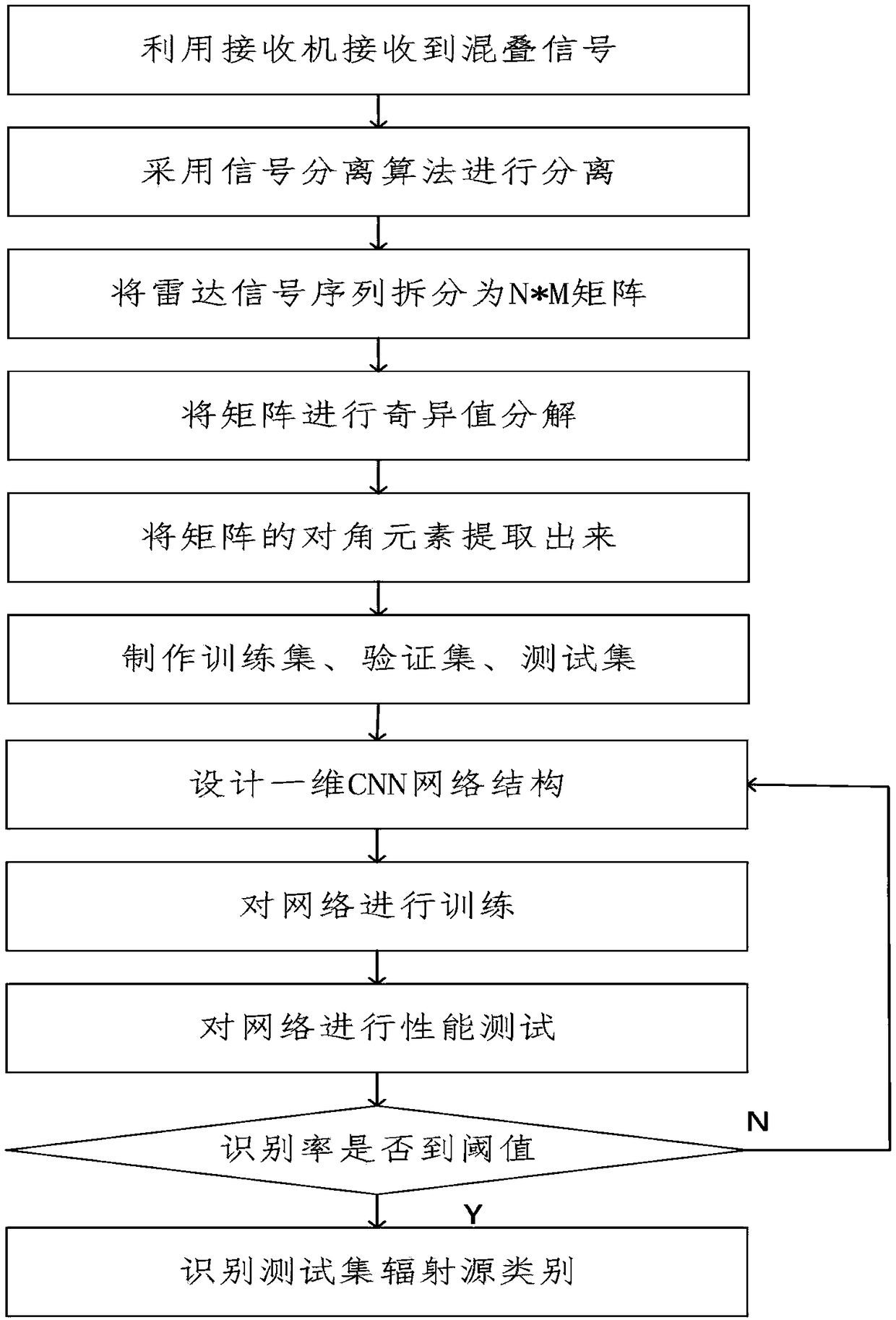Radar radiation source identification method based on singular value decomposition and one-dimensional CNN network
A singular value decomposition and singular value technology, applied in the field of signal processing, can solve problems such as high time complexity, low algorithm recognition rate, inability to adapt to the electromagnetic environment, etc., and achieve the effect of reducing processing time and processing volume
- Summary
- Abstract
- Description
- Claims
- Application Information
AI Technical Summary
Problems solved by technology
Method used
Image
Examples
Embodiment Construction
[0037] refer to figure 1 , the radar radiation source identification method of the present invention, its realization steps are as follows:
[0038] Step 1: Use a signal separation algorithm to perform signal separation.
[0039] Due to the complexity of the actual electromagnetic environment and the serious aliasing of the signals received from the receiver, it is necessary to use a separation algorithm for signal separation. The most commonly used separation algorithm is the blind separation algorithm, which mainly includes A) blind separation algorithm based on information theory, B) blind separation algorithm based on second-order statistics, and C) blind separation algorithm based on high-order statistics.
[0040] The present invention adopts but not limited to B), that is, the blind separation algorithm based on second-order statistics separates the aliasing signals, and obtains a single radar signal time series x k (t), t=1, 2, ... n, n is the sampling point number o...
PUM
 Login to View More
Login to View More Abstract
Description
Claims
Application Information
 Login to View More
Login to View More - R&D
- Intellectual Property
- Life Sciences
- Materials
- Tech Scout
- Unparalleled Data Quality
- Higher Quality Content
- 60% Fewer Hallucinations
Browse by: Latest US Patents, China's latest patents, Technical Efficacy Thesaurus, Application Domain, Technology Topic, Popular Technical Reports.
© 2025 PatSnap. All rights reserved.Legal|Privacy policy|Modern Slavery Act Transparency Statement|Sitemap|About US| Contact US: help@patsnap.com



